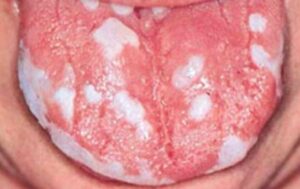Oral cancer is often associated with older individuals, but it’s crucial to recognize that children and adolescents are not exempt from this potentially life-threatening condition. While pediatric oral cancer is relatively rare compared to adult cases, its impact can be devastating if not detected and treated early.
Therefore, fostering awareness, implementing preventive measures, and promoting early detection strategies are paramount in safeguarding the oral health of children and adolescents. Not only this but regularly visiting one of the best Windermere pediatrics in Orlando also holds crucial importance.
Awareness:
Pediatric oral cancer refers to malignancies that occur in the mouth and throat of individuals under the age of 18. While it accounts for a small percentage of all pediatric cancers, its incidence has been gradually increasing in recent years.
Awareness about this condition is essential among parents, caregivers, and healthcare providers to ensure timely diagnosis and appropriate management.
Risk Factors:
Understanding the risk factors associated with pediatric oral cancer is crucial for prevention and early detection. While many risk factors overlap with adult oral cancer, such as tobacco and alcohol use, there are specific factors that are more relevant to children and adolescents. These include:
- Human Papillomavirus (HPV) Infection: HPV, particularly HPV type 16, has been linked to oral cancer in young individuals. Encouraging HPV vaccination can help reduce the risk of HPV-related oral cancers.
- Genetic Predisposition: Children with certain genetic syndromes, such as Fanconi anemia and dyskeratosis congenita, have a higher risk of developing oral cancer. Genetic counseling and screening may be recommended for at-risk individuals.
- Poor Oral Hygiene: Neglecting oral hygiene practices can contribute to the development of oral cancers, even in children. Educating children and parents about the importance of regular brushing, flossing, and dental check-ups is vital.
- Sun Exposure: Prolonged exposure to the sun’s ultraviolet (UV) rays can increase the risk of lip cancer. Encouraging the use of lip balm with UV protection and wearing hats when outdoors can help mitigate this risk.
Prevention:
Prevention plays a crucial role in reducing the incidence of pediatric oral cancer. Implementing the following measures can significantly lower the risk:
- HPV Vaccination: Vaccinating children against HPV can effectively prevent HPV-related oral cancers. The HPV vaccine is recommended for both boys and girls, ideally before they become sexually active.
- Healthy Lifestyle Choices: Encouraging children to adopt a healthy lifestyle, including a balanced diet rich in fruits and vegetables, regular physical activity, and avoidance of tobacco and alcohol, can lower their overall cancer risk.
- Sun Protection: Teaching children to protect their lips from sun exposure by using lip balm with SPF and wearing hats or seeking shade when outdoors can reduce the risk of lip cancer.
- Regular Dental Check-ups: Scheduling regular dental visits allows for early detection of any abnormalities or lesions in the mouth. Dentists can perform oral cancer screenings as part of routine check-ups.
Early Detection:
Early detection is key to improving outcomes in pediatric oral cancer cases. Parents and healthcare providers should be vigilant for signs and symptoms such as:
- Persistent mouth sores or ulcers that do not heal
- White or red patches in the mouth
- Swelling or lumps in the mouth or neck
- Difficulty swallowing or persistent sore throat
- Unexplained bleeding or numbness in the mouth
- Any concerning symptoms should prompt a prompt evaluation by a healthcare professional, preferably one experienced in pediatric oral health.
Pediatric oral cancer may be rare, but its impact on young lives can be significant. By raising awareness, addressing risk factors, promoting preventive measures, and emphasizing early detection, we can work towards reducing the incidence and burden of oral cancer among children and adolescents.
Through collaborative efforts involving parents, healthcare providers, educators, and policymakers, we can strive to ensure that every child enjoys good oral health and a cancer-free future.
